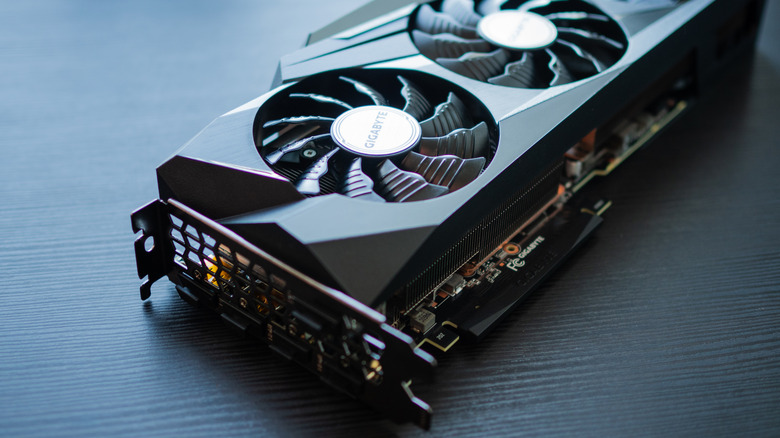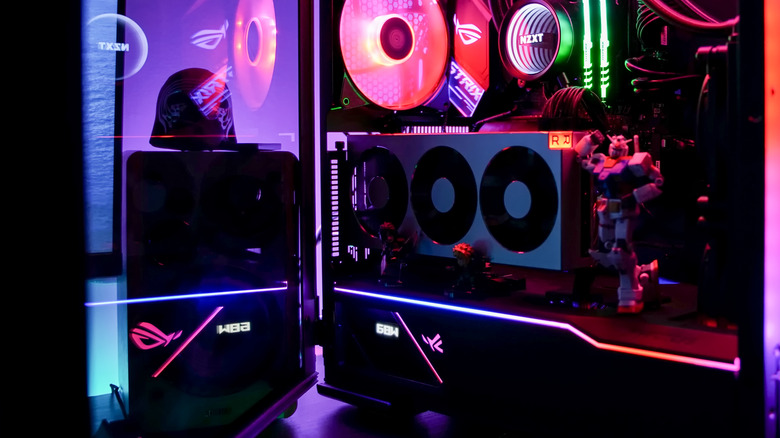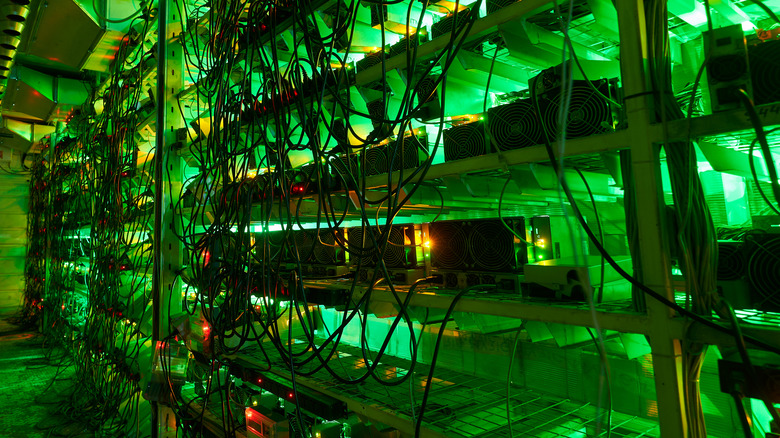Why You Probably Shouldn't Buy A Used Graphics Card
Over the last few years, gamers in search of a new GPU have experienced nothing but frustration and potential bankruptcy. Events like a global semiconductor shortage and the rise of bitcoin mining drove graphics card prices well above their usual retail price. Cards that had previously cost hundreds now cost thousands. An already expensive part suddenly costs more than the rest of the build combined in some cases, so it's understandable if a lot of PC builders put a new rig or a GPU update on the back burner.
However, there is light at the end of the tunnel. The recent crypto crash has reduced the profitability of mining to the point where it isn't worth the effort. Mining rigs, which were basically money printing machines when crypto was on the up, are now making their owners less than a dollar per day. As a result, the demand for GPUs is plummeting and the costs are falling with it. For the first time in years, you can buy high-end graphics cards for their MSRP. Some new cards are currently selling for around 33% less than the prices they were listed for a few months ago. Prices could potentially fall even further if suppliers end up overstocked because of reduced demand.
Then there is the second-hand market. Some crypto miners are trying to recoup money by dismantling their mining rigs and selling their GPUs. Second-hand cards are flooding the market and some are available at a massive discount. This could mean the difference between a budget card and a high-end one, give you more money to use elsewhere in a build, or just leave a bit of extra cash in your bank account. But is saving a few hundred dollars by buying a used card worth the risk?
Why a used graphics card may not be all bad
In most circumstances, you have no way of knowing what a second-hand card was used for and how it was treated before you bought it. If you do know and trust the previous owner — say your PC gaming friend who treats their tech with the utmost respect is upgrading and offers you their old card at a discount — you'll probably be fine taking them up on the offer. However, the majority of used cards on the market at the moment will have been used to mine crypto. That means they were running at high capacity 24 hours a day, seven days a week, all year round. The bigger miners may have had hundreds of cards, so were unlikely to have cleaned and inspected every one of them routinely.
However, this may not necessarily mean a card will have problems. Linus, of Linus Tech Tips fame, responded to GPU manufacturer Palit Microsystems' claim that "a card used for mining 24 hours per day, seven days per week, will lose 10% of its performance each year." He tested cards that had been mining crypto for different periods of time all the way up to four years. Linus came to the conclusion that the cards will either break completely or they won't — mining will not make them lose a set amount of performance over a period of time. The tech vlogger did note that maintenance would make a difference and overheating problems caused by dust and dirt buildup would affect performance. Linus' conclusion was that a clean, well-maintained card should be okay no matter what it was used for — and at a significant discount, it could be worth a gamble.
And why it might not be worth the risk
Linus did admit his test involved cards that were kept clean, so it is possible to view the whole thing as a best-case scenario. When you're buying a used card, you have no idea how it was treated. Worse yet, a dust-free life may not actually guarantee a working card. Individuals who purchased second-hand cards from Chinese resellers have reported a plethora of problems.
Some of the deals may seem too good to turn down. WCCF Tech reports that one used MSI GeForce RTX 3080 SUPRIM X went for less than half of its list price on NewEgg and over $100 less than its MSRP in one of the online sales. On paper, that's a reasonable deal, but it came with a catch. The card in question had been disassembled and reassembled, presumably to replace its thermal pads. That was just the tip of the iceberg, and instead of the 10 GB of VRAM the RTX 3080 should have had, the second-hand example was only registering eight. The card had presumably been used intensely until two of its memory modules failed, then was jerry-rigged to work and used a bit more.
Even if memory modules have failed, it is possible to get them working and rig the card to show that it has the correct amount of VRAM. This sort of technique could be used to trick buyers into thinking they have purchased a fully functional card. You can replace a damaged card's faulty memory modules, but at that point, the costs and effort involved may make the whole process pointless. Another risk with used cards is their far shorter life expectancy, so buying new is probably your best option.


